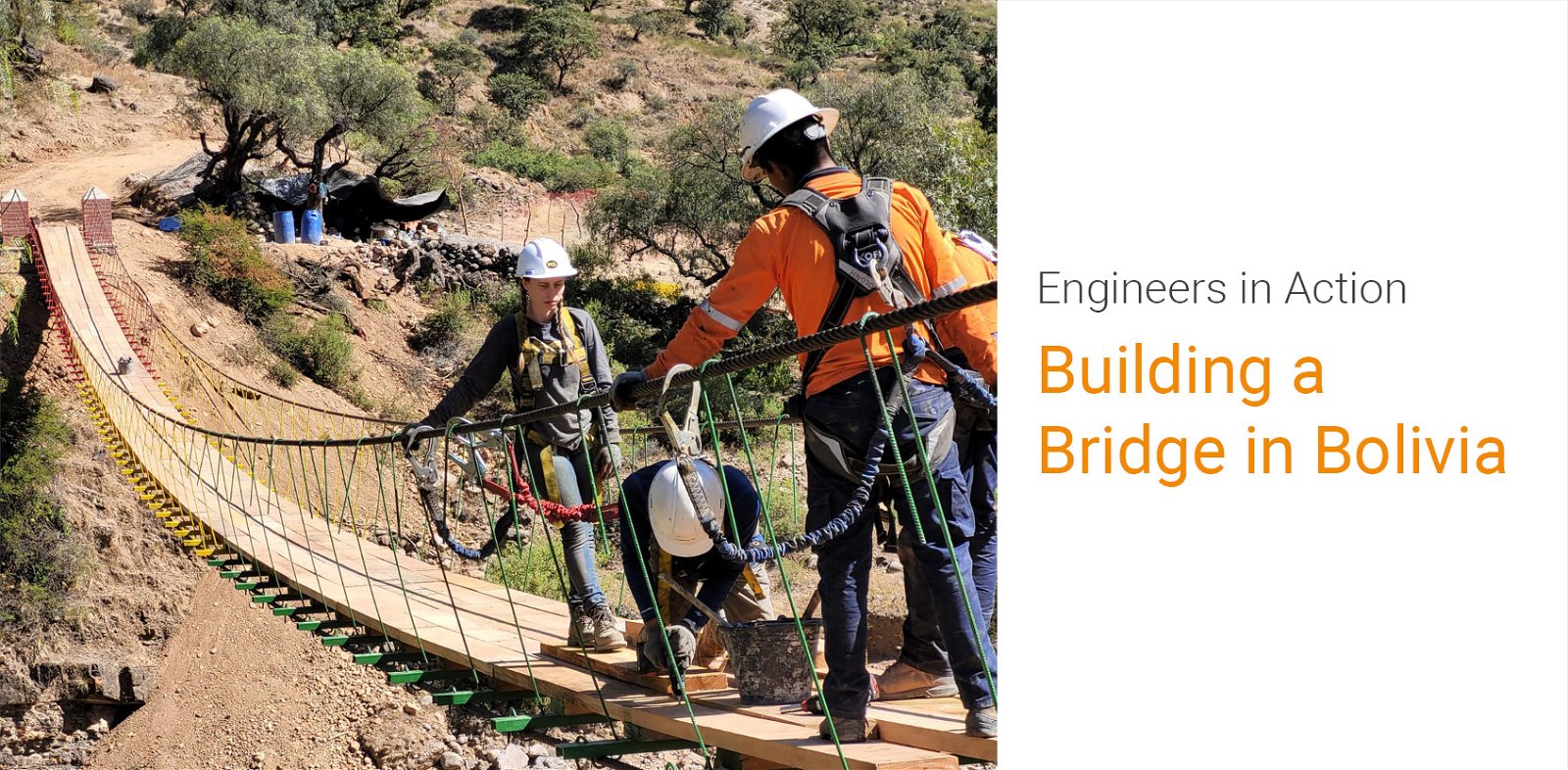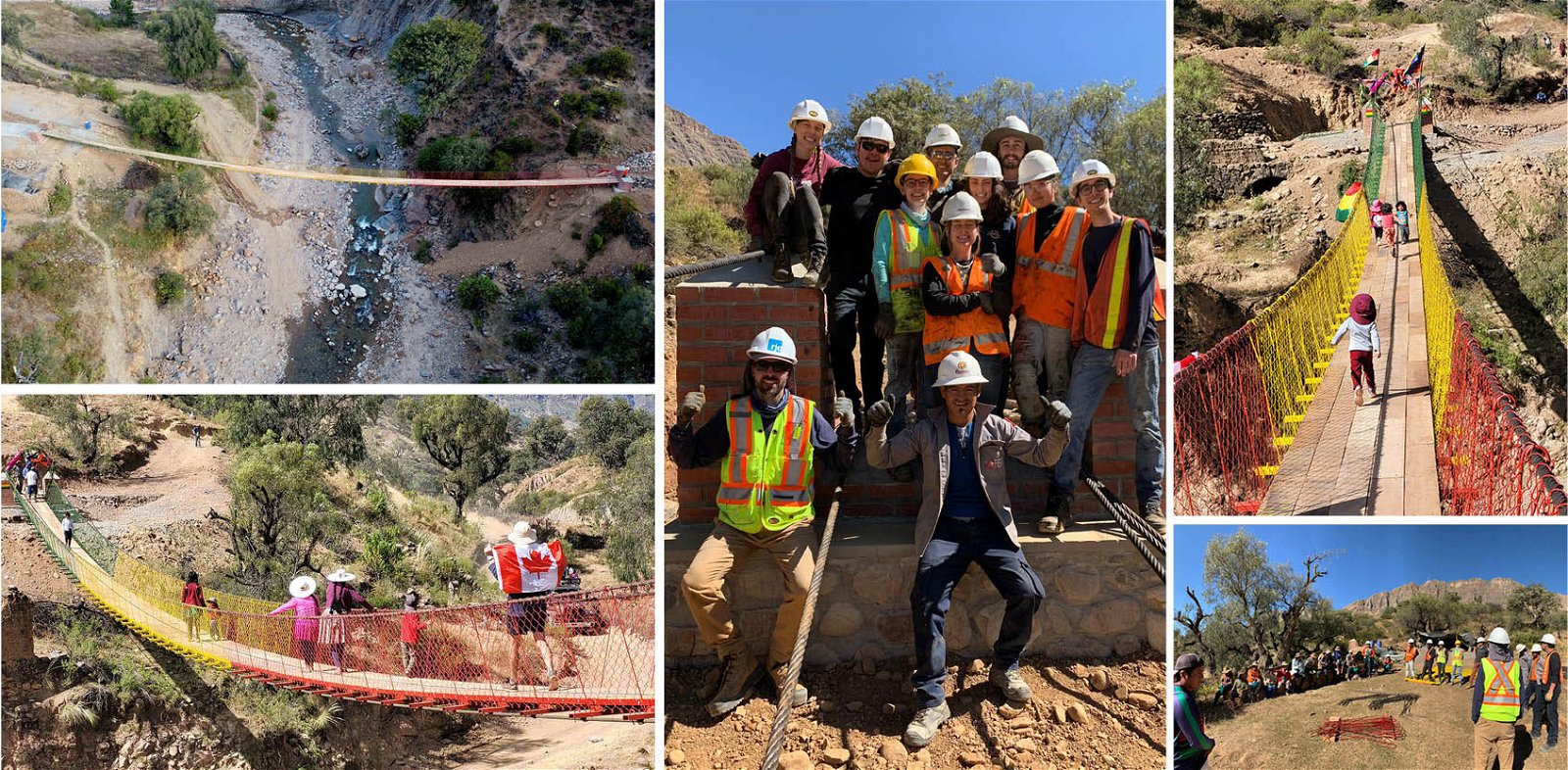University of Alberta Engineers in Action Helps Build Bridge in Bolivia
- Details

RJC Associate Creag Vogel has returned from Bolivia where he helped design and construct a suspended footbridge in Quinamara, Bolivia. The bridge will help 350 people in two communities, including 30 children. It will help community members access nearby schools and health centres.
“Being able to use my skillset to make a difference in the lives of others is incredibly rewarding. The work of Engineers in Action makes a real impact in the communities globally” shares Creag. “The people who are part of these projects are all united in a purpose – to build bridges to connect people. We come together to design, construct and deliver these bridges, and have a lot of fun doing it. Seeing the excitement when the bridge opens and watching community members use the bridge, is exciting and humbling.”
Creag has been a volunteer with the University of Alberta (UofA) chapter of Engineers in Action (EIA) since 2019. Engineers in Action (EIA) is an international non-profit organization whose mission is to support development of sustainable systems and infrastructure with underserved communities, local experience, and global partners. Since 2006 in EIA's Bridge Program, hundreds of students from 30+ universities across the globe have designed and built 80+ footbridges alongside rural communities in 11 countries. Through their work, they have helped connect nearly 150,000 previously isolated people to essential resources.
Civil Engineering students founded the UofA Chapter in 2015. The students wanted to help provide isolated communities with safe year-round access to schools, work, hospitals, and markets across previously impassable rivers. Since inception, the Chapter has helped build five footbridges serving multiple communities throughout Bolivia.

Creag and others from the UofA Chapter EIA group provided bridge design, including load analysis and geometric conformance. They also helped with the construction plan, including construction schedule, plan of materials, safety, quality control, and management. The team travelled to Bolivia to complete the bridge construction. It took less than five weeks to build the bridge, which was ahead of schedule.








